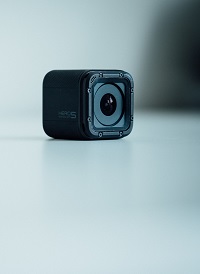Audio and video clips from individuals have been key features in a number of scandals in the public square. Now a new type of video manipulation is going to make it harder to tell the real from the fake in the digital world.
 Photo: Sharegrid (Unsplash, CC0)
Photo: Sharegrid (Unsplash, CC0)
Seeing is believing, as the old phrase goes. However, we’re about to turn a corner in digital fakery that undermines this belief and has the potential to deepen the crises of misinformation and trust.
Did you see Barack Obama’s public announcement about fake news?
Only, it wasn’t actually Obama. But, you’d be forgiven for thinking it was. That’s because Artifical Intelligence has been used to combine a video of Obama with the actor Jordan Peele’s mouth and voice, with surprisingly realistic results, in a new type of video manipulation known as a ‘Deepfake’. In the words of Deepfake Obama, ‘We’re entering an era in which our enemies can make anyone say anything at any point in time’.
The Deepfake software, which is freely available to download and run, is one in a series of increasingly sophisticated tools (often powered by machine learning) that are going to make it harder to tell the real from the fake in the digital world.
From bots spamming forums and social media to influence debate, to tools to create fake audio, the digital space is ripe for misinformation and manipulation—and these developments in video will only amplify the ‘fake news’ problem.
What’s to be made of all this? On the one hand, some technologists argue that these new tools will cause an ‘information apocalypse’. However, we’ve already learnt to cope with discerning fake images (we’ve had Photoshop since 1990), and research is already underway to develop algorithms that could helpfully identify doctored video. Whatever the case—and it’s always difficult to make predictions about the future—the current social context means that these developments are primed to amplify our current crisis of trust.
In the 21st century, every individual is now a content-producer, making and disseminating their own photos, videos and text across social media, blogs and video sharing sites.
At the same time, there has been a growing lack of confidence in institutions, media and politicians. Audio and video clips from individuals have been key features in a number of exposés and scandals in the public square.
 Photo: M. Fassnacht (Unsplash, CC0)
Photo: M. Fassnacht (Unsplash, CC0)Distrust of authority is particularly high amongst younger generations, and it becomes easy to see the individual blogger/reporter (with camera-phone to hand) as an unbiased, authentic source. At the end, when it’s been demonstrated that you can’t trust anyone’s word, you can trust the video; ‘seeing is believing’.
However, when any individual can (with time, lots of HD video and the right system requirements) make a public figure apparently do or say something in video, this saying that ‘seeing is believing’ collapses. And the establishments that the public don’t trust are precisely the establishments that are most needed to verify news and regulate malicious information.
Moreover, the mere fact of having the technological capacity to alter video and audio can be used by public leaders to cast aspersion or doubt on unfavourable sources. It has already been noted that despite originally apologising for his words on the Access Hollywood tape, Trump has now denied it was his voice on those recordings because of ‘experts who told him it’s possible it was digitally faked’.
If this is a suggestion of what the future public discourse might look like, then we must ask two vital questions: How can we trust our leaders? And, how can we trust each other?
 Photo: Dose (Unsplash, CC0)
Photo: Dose (Unsplash, CC0)Christians have a vital perspective to bring in this scenario.
For those who trust in an ‘unbiased’ individual but distrust establishment, Christians can gently insist that the line between good and evil passes through every human heart. There is no basis on which to trust the individual above the institution; instead we can take a clear assessment of our institutions, acknowledging human fallibility and bad intent whilst holding them to a level of integrity. Indeed, we must be willing to grant trust to leaders who are committed to public service and fair reporting.
Secondly, we can insist that it is time to return to a basis of trust that doesn’t rest solely on knowing ‘exactly what happened’ (is that really trust anyway?), but instead rests on knowing a person (or organisation)’s character. Jesus tells us, ‘by their fruit you will recognise them’ (Matt 7:20) and we would do well to apply this thoughtful discernment. Much of this work can only be done slowly and carefully, requiring an engagement from us that moves beyond surface-level news consumption.
It also might mean focusing our concern on local news and politics, and participating in face-to-face encounters. Ultimately, it requires the work of relationship and commitment, and the development of a wave of leaders whose real words can be trusted.
Charlee New, Communications and Marketing Officer at the Jubilee Centre.
This article first appeared on the Jubilee Centre website and was republished with permission.

Las opiniones vertidas por nuestros colaboradores se realizan a nivel personal, pudiendo coincidir o no con la postura de la dirección de Protestante Digital.
Si quieres comentar o